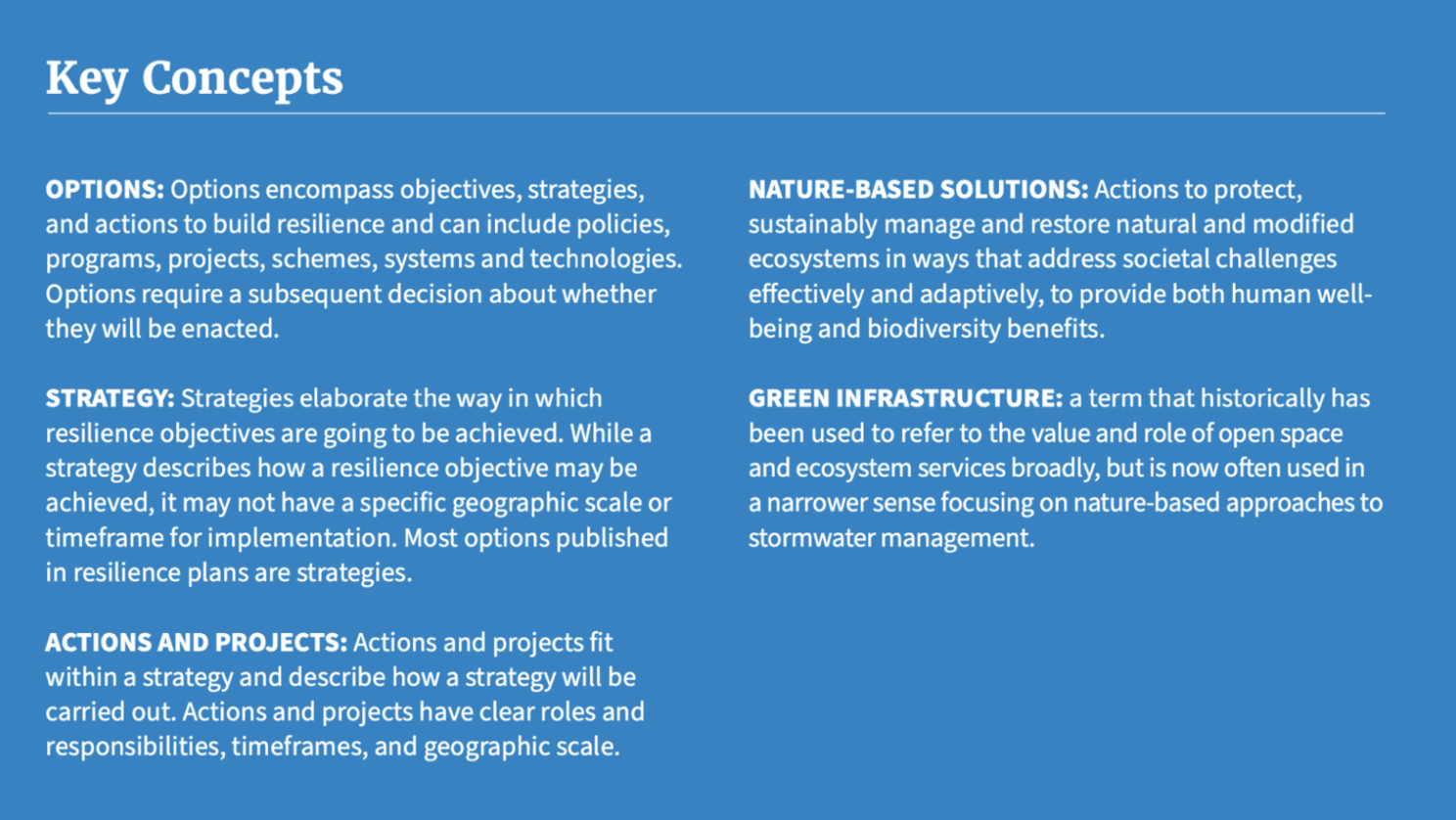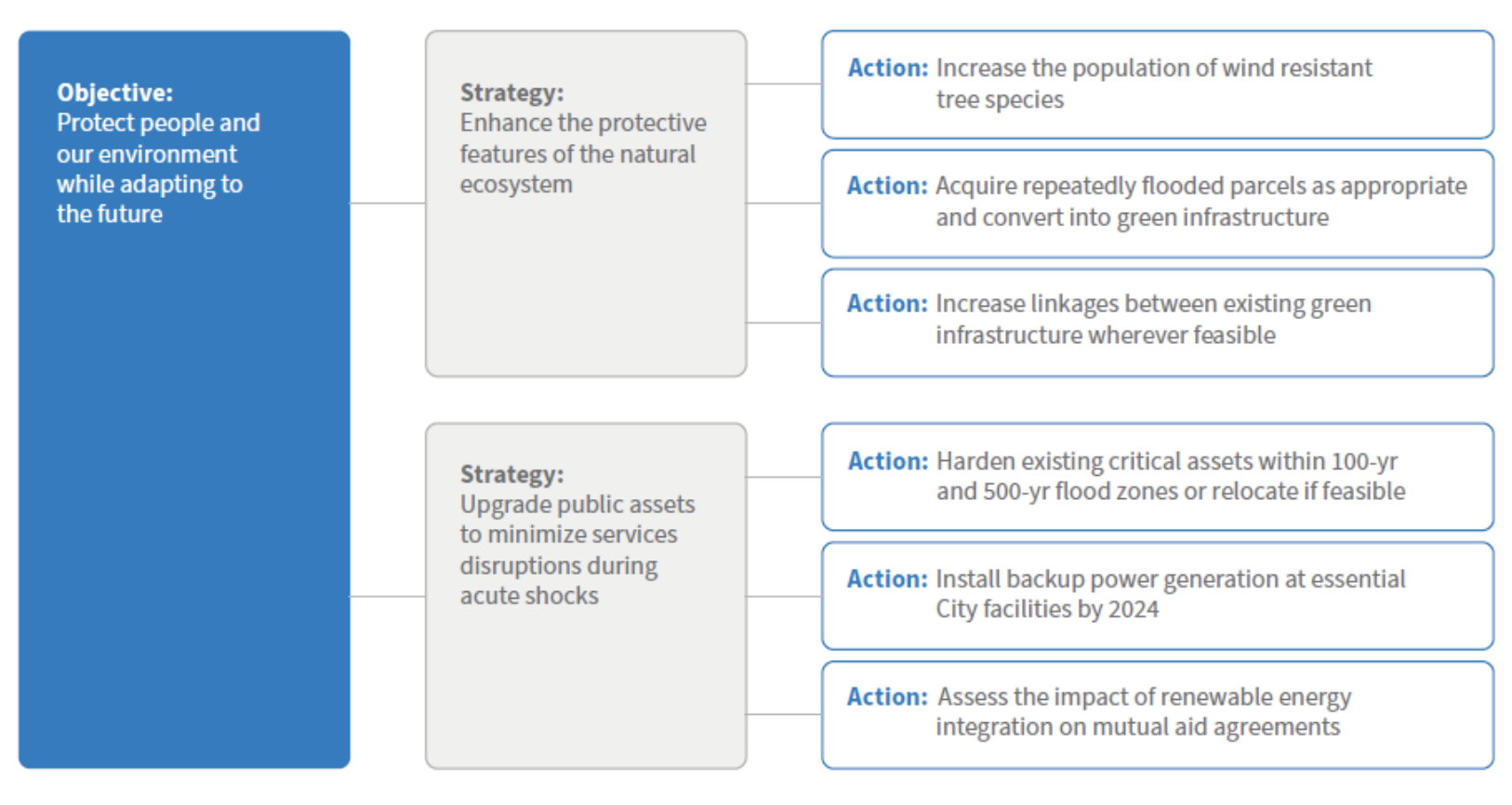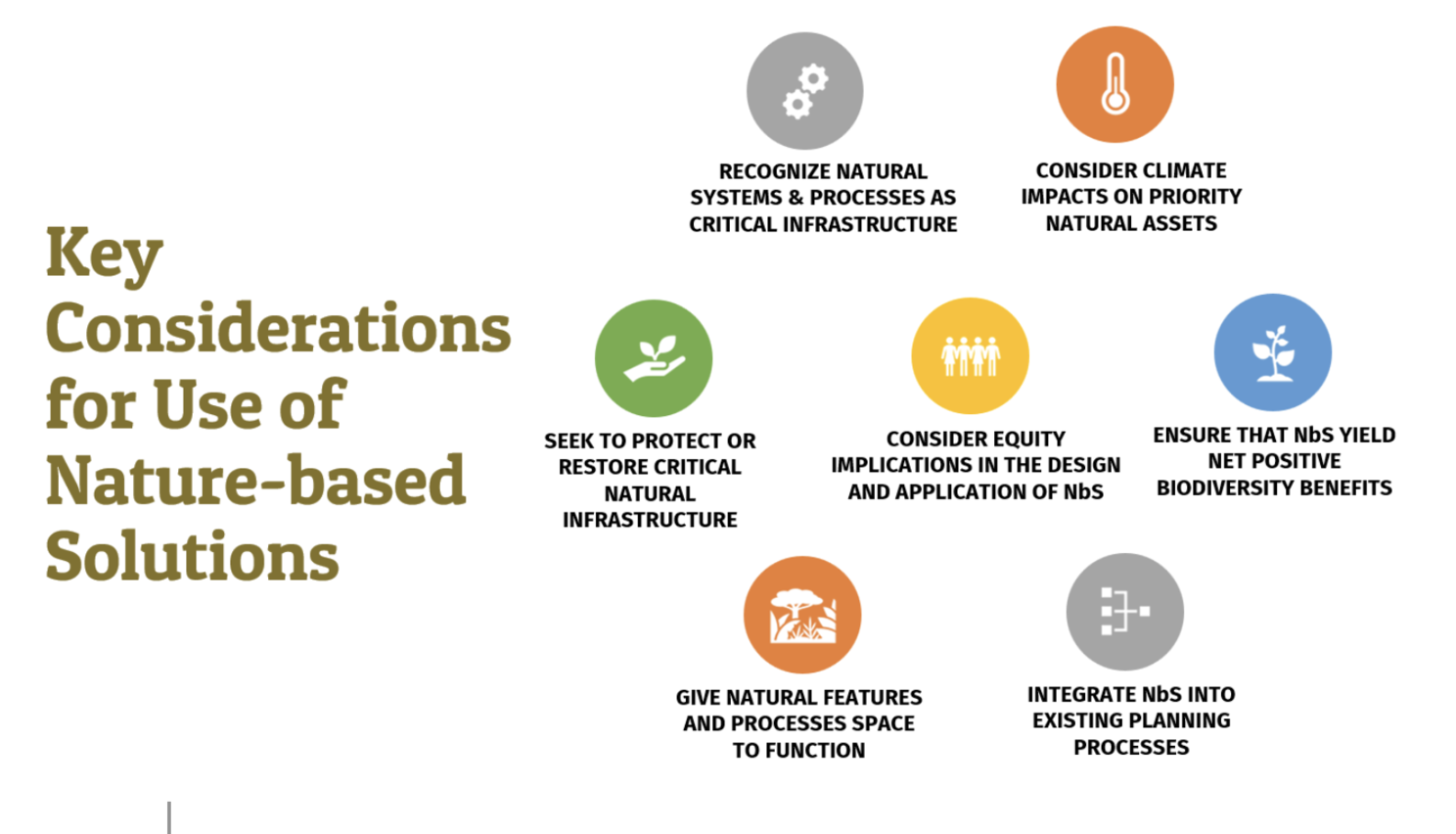Steps to Resilience Training Recap: Investigating Options

Session 4, Step 3, Investigate Options
The third step in the Steps to Resilience Practitioner's Guide, Investigate Options, involves using information gathered to this point and collaborating with the community and stakeholders to brainstorm a list of options for reducing vulnerabilities and risks related to climate change for vulnerable populations and communities.
In session 4 of the pilot training program, participants explored how to prioritize a community’s most pressing needs after identifying its greatest vulnerabilities and risks in Step 2. To build resilience to high priority vulnerabilities and risks, options included a variety of objectives, strategies, and actions.
Resilience objectives should be consistent with the vision and goals of the community that were developed at the beginning stages of the project. Broad resilience objectives then provide a template for refining strategies and actions in subsequent stages.

Page 66, Practitioner’s Guide to the Steps to Resilience
Learning Objectives:
Session 4, Step 3 of the Steps to Resilience framework, builds on the previous work the practitioner has done with the community to:
- Review vulnerability and risk findings
- Define resilience objectives
- Research options: compile existing strategies and actions
- Narrow this list to acceptable options for your community
A key takeaway from session 4 is understanding how to approach investigating options through the use of objectives, strategies, and actions.

Resilience objectives are specific goals that help the community make targeted action to address key challenges. While different from the main goals of the project, these objectives should align with the vision, values, and goals outlined at the outset of the project and may aim to address climate resilience, social equity, or both. These actions are hierarchical, often with multiple strategies within a single objective. Within those strategies, there are often individual actions or projects that can be implemented.
When brainstorming options for and with the community, it is important to take the folling into consideration:
- Types of options (a variety of options is a more holistic approach), such as natural infrastructure, built infrastructure, governance capacity, etc.
- Understand how the options reduce vulnerability and risk
- R Understand opportunities and considerations for social equity
- Include any supporting information about the options
During the session, facilitators led participants through an exercise using these considerations to begin brainstorming and identifying actions and strategies for the location chosen by their small group for the program. Building on previous sessions and learning objectives, as well as information gathered about their group's particular location, participants were challenged to think about how these actions might reduce exposure, decrease sensitivity, or increase adaptive capacity.
Each CCRE grantee team whose work was incorporated into the Practitioner‘s Guide is invited to lead a discussion on their special topic area throughout the program. As Nature-based Solutions are important options for communities and practitioners to consider, Arsum Pathak and Emily Donahoe from the National Wildlife Federation gave a presentation on the guidance developed under the CCRE grant, entitled , “Incorporating Nature-based Solutions into Community Climate Adaptation Planning”. Their presentation shared many examples of Nature-based Solutions and considerations for incorporating them into resilience planning:

Learn more about their work for this grant and read the full guidance report here. Practitioners are encouraged to develop a portfolio of options that incorporate a range of types of actions, including nature-based solutions.
Learn more about the first session and our team‘s co-facilitation of this series of trainings here.
Updates on the training program can be found on the Resilience Ecosystem Website..
Interested in learning more? Let's Talk